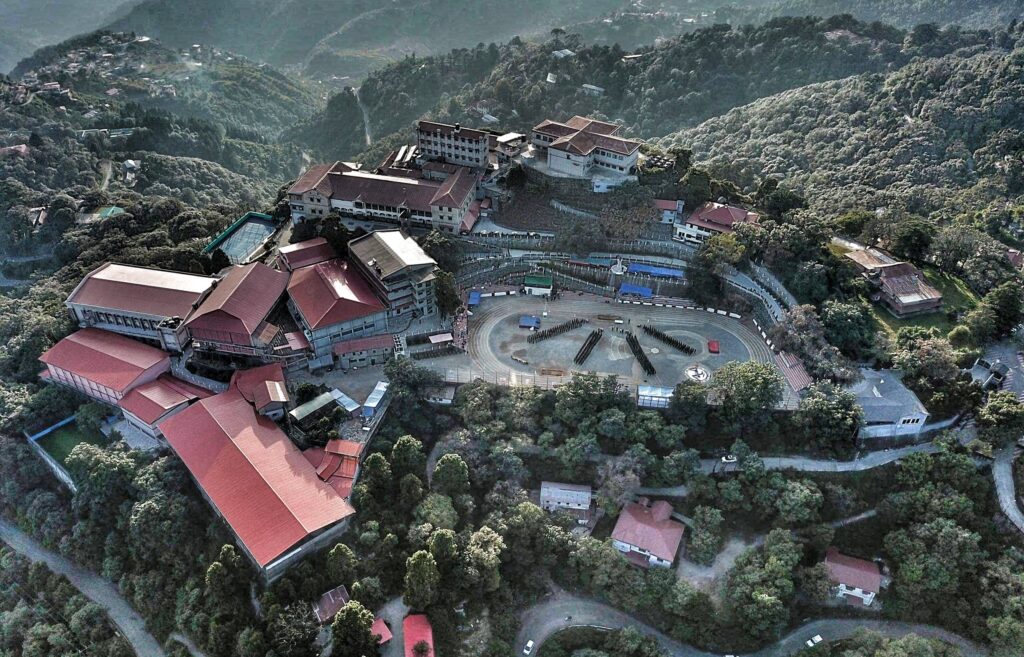In India, the concept of a school goes beyond academics. It’s a place where young minds are nurtured, friendships are forged, and a love for learning takes root. The physical environment where this development takes place can have a profound impact. Beautiful school campuses can spark creativity, inspire a sense of wonder, and provide a peaceful atmosphere conducive to focused study. In this blog, we explore ten of India’s most architecturally beautiful schools, where scenic landscapes and thoughtful design combine to create truly special educational spaces.
From heritage structures whispering stories of the past to contemporary marvels blending seamlessly with nature, these campuses showcase the unique architectural diversity of India. Join us on a virtual tour of these educational gems, and discover the beauty that complements the pursuit of knowledge!
Best School Campuses in India
Here is the list of best School Campuses in India:
10. St. Joseph’s College
Established In: 1888
St. Joseph’s College Nainital’s architecture is a blend of old and new. The core buildings date back to 1889, with a focus on solidity as reflected in the fortress-like walls. Over the years, new wings and facilities have been added, including a modern gymnasium and science labs. The sprawling campus encompasses 60 acres and has a prominent location overlooking Naini Lake.
9. The Rajkumar College
Established In: 1868
The school’s heart lies in a majestic quadrangle. Here, impeccably maintained lawns and hedges are embraced by the distinctive stone archways of the Indo-Gothic buildings, creating an atmosphere of old-world charm.
8. Wynberg-Allen School, Mussoorie

Established In: 1888
Wynberg Allen School has a historic campus spread over 300 acres. The Wynberg Estate features buildings from its founding in the late 19th century, while the adjacent Henry Allen Memorial School offers modern facilities. Recent renovations have added world-class sports facilities, creating a blend of heritage and contemporary architecture.
7. Maharani Gayatri Devi Girls’ School
Founded In: 1943
Maharani Gayatri Devi Girls’ School has a sprawling 26-acre campus in the heart of the city. The various buildings, including a dedicated art cottage, science house, and auditorium, reflect a blend of traditional and modern styles. Lush gardens, sports fields, and a variety of facilities create a vibrant and well-rounded learning environment.
6. Lawrence School, Lovedale
Established In: 1858
The Lawrence School, Lovedale’s sprawling campus occupies 750 acres at a cool 7200 feet in the Nilgiri Hills. Its buildings are a unique blend of history and environment, likely reflecting the school’s colonial roots and scenic mountain setting.
5. SGVP International School
Established In: 1999
The Swaminarayan Gurukul Vishwavidya Pratishthanam (SGVP) comes with a modern campus on the outskirts of Ahmedabad. Spanning 52 acres, it offers a blend of traditional and contemporary facilities, catering to students from Junior KG to Class XII.
4. Ramakrishna Mission Vidyapith

Established In: 1922
Ramakrishna Mission Vidyapith’s campus reflects its spiritual heritage with traditional architecture, creating a serene atmosphere conducive to learning and personal growth.
3. The Scindia School
Founded In: 1897
The Scindia School leverages historic 19th-century British barracks for its buildings, lending a distinct old-world charm. To preserve this heritage, recent renovations focused on restoring the original structures while incorporating modern upgrades. This includes improved waterproofing, a new sports pavilion roof, and a sympathetic redesign of the dining hall to better integrate with its surroundings.
2. St. Bedes School, Shimla
Established In: 1904
St. Bede’s College showcases a blend of architectural styles. The historic core likely reflects the colonial-era origins of the “Chelsea” estate, while the 1964 block exemplifies a modern architectural design with features like a dedicated library space and classrooms.
1. The Hyderabad Public School
Established In: 1923
The Hyderabad Public School comes with a rich architectural heritage. The original buildings showcase a blend of Western and Deccani influences, featuring domes, turrets, arcades, and elaborate detailing. These structures have been meticulously maintained and even won awards for historic preservation. Newer additions, like the Ramandeep Samra Center for Music and Performing Arts, incorporate contemporary elements while still respecting the overall aesthetic.
Conclusion
India’s schools are as diverse and vibrant as the nation itself. The ten campuses explored here offer a glimpse into this rich tapestry, where architectural brilliance serves to elevate the educational experience. These schools stand as testaments to the importance of creating beautiful and inspiring spaces for young minds to flourish.








Be the first one to comment on this story.